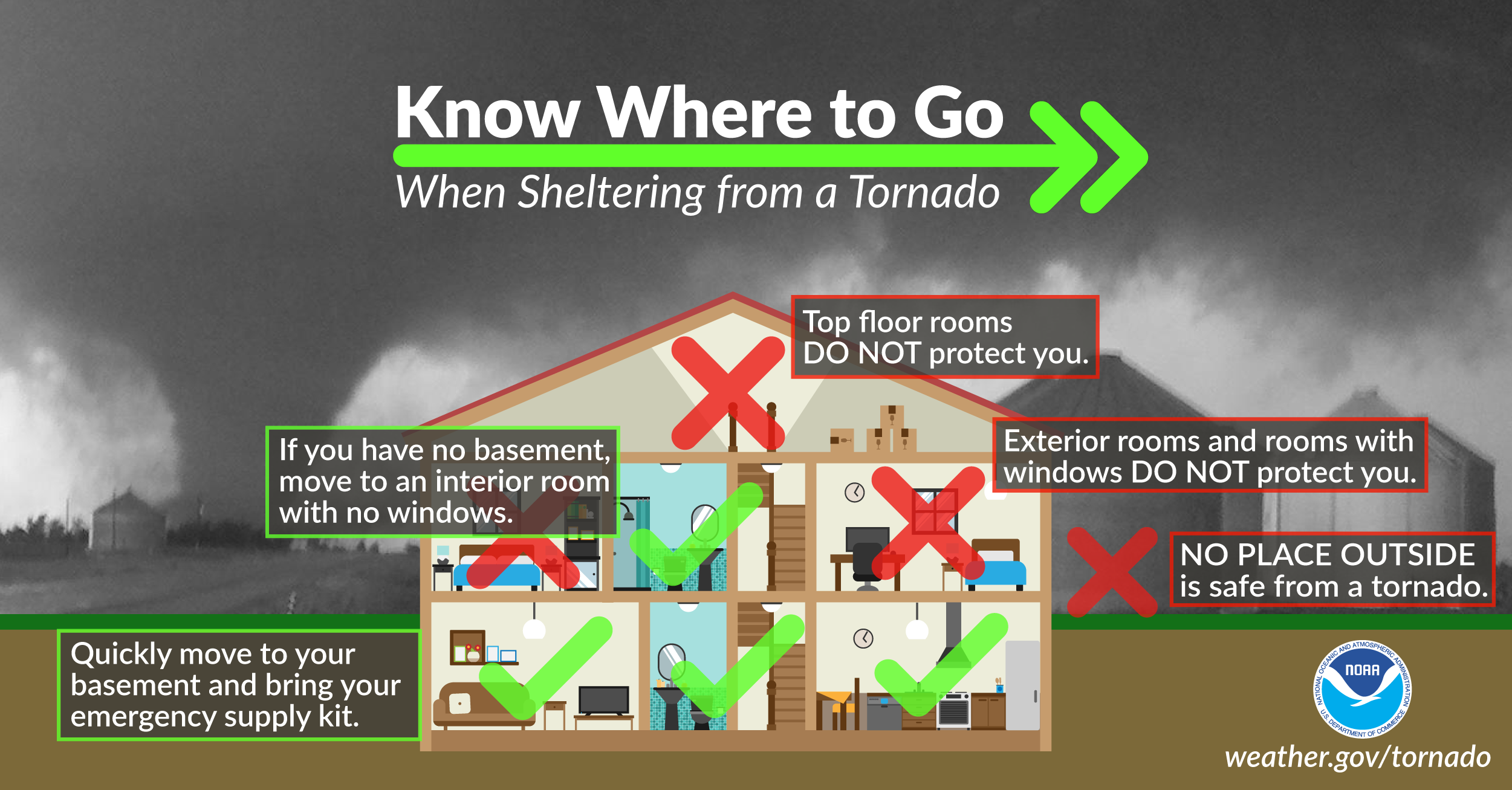Protecting Your Home And Family From Floods: Severe Weather Awareness Week

Table of Contents
Understanding Flood Risks and Preparedness
Before you can effectively protect your home from flooding, you need to understand your risk and plan accordingly. This involves assessing your vulnerability, creating a family emergency plan, and securing adequate flood insurance.
Assessing Your Flood Risk
Determining your property's susceptibility to flooding is the first critical step in effective flood protection. Several resources can help you assess your risk:
- FEMA Flood Maps: The Federal Emergency Management Agency (FEMA) provides detailed flood maps showing areas at high risk. Check your address on their website to see your property's flood zone designation.
- Local Emergency Management Websites: Your local government's emergency management agency will have valuable information about historical flood events in your area and specific risks.
- Consider Your Location: Properties near rivers, streams, creeks, coastal areas, or in low-lying areas are inherently more vulnerable to flooding.
- Understand Flood Types: Different types of floods exist, including riverine floods (overflowing rivers), coastal floods (storm surges), and flash floods (rapidly rising water). Knowing the types of floods that affect your area helps tailor your preparedness efforts.
Creating a Family Emergency Plan
A comprehensive emergency plan is essential for effective flood protection and ensuring your family's safety. Your plan should include:
- Evacuation Routes: Identify multiple escape routes from your home, considering potential road closures due to flooding.
- Meeting Points: Designate both a nearby and a distant meeting point in case you become separated.
- Out-of-Area Contact: Choose a contact person outside your immediate area to serve as a communication hub for family members.
- Emergency Kit: Prepare a kit with essential supplies: water (one gallon per person per day for several days), non-perishable food, medications, first-aid kit, flashlights, batteries, blankets, and important documents (copies in a waterproof container).
- Regular Practice: Regularly practice your evacuation plan to ensure everyone knows what to do in an emergency.
Investing in Flood Insurance
Flood insurance is crucial for flood protection, as standard homeowner's insurance policies typically do not cover flood damage.
- Explore Options: Obtain quotes from multiple insurers to find the best coverage at a competitive price.
- Understand Coverage: Carefully review your policy to understand coverage limits, deductibles, and what is and isn't covered.
- Supplemental Insurance: Consider supplemental flood insurance for additional protection beyond basic coverage. This is especially important for high-value possessions.
Implementing Flood Mitigation Measures
Proactive measures significantly enhance your home's resilience to floods and minimize potential damage. These include home improvements, protecting your belongings, and maintaining your drainage system.
Home Improvements for Flood Protection
Investing in structural modifications can greatly improve your home's flood protection:
- Elevate Electrical Systems: Raise electrical panels, wiring, and appliances to prevent water damage.
- Flood Barriers/Vents: Install flood barriers to prevent water from entering your home or flood vents to allow water to escape safely.
- Waterproof Materials: Use waterproof materials in basements and ground floors to minimize water absorption.
- Landscaping: Redirect water away from your foundation through proper grading and landscaping techniques.
Protecting Your Belongings
Protecting your valuables is a key aspect of effective flood protection:
- Waterproof Containers: Store important documents, photos, and irreplaceable items in waterproof containers or safety deposit boxes.
- Elevate Possessions: Raise furniture and appliances off the floor to prevent water damage.
- Waterproof Storage: Use waterproof storage for electronics, medications, and other sensitive items.
Maintaining Gutters and Drainage
Regular maintenance of your drainage system is vital for preventing water accumulation and improving flood protection:
- Clean Gutters/Downspouts: Regularly clean gutters and downspouts to prevent blockages and ensure efficient water flow.
- Proper Grading: Ensure proper grading around your foundation directs water away from your home.
- Repair Damage: Address any damaged drainage pipes or other issues promptly.
Responding to a Flood Warning
Knowing how to respond to a flood warning is critical for minimizing risk and ensuring safety.
Monitoring Weather Forecasts
Staying informed is essential for effective flood protection:
- Emergency Alerts: Sign up for emergency alerts through your local government or the National Weather Service.
- News/Weather Channels: Monitor local news and weather channels for updates and warnings.
Evacuation Procedures
If a flood warning is issued, follow these steps:
- Move Valuables: Move valuables to upper floors or a safe, dry location.
- Turn Off Utilities: Turn off gas and electricity if instructed by authorities.
- Evacuate: Follow official evacuation orders and use your pre-planned evacuation route.
- Never Drive Through Floodwaters: Floodwaters can be deceptively deep and dangerous; never attempt to drive through them.
Post-Flood Safety and Cleanup
After a flood, prioritize safety and follow recommended cleanup guidelines:
- Avoid Floodwater: Floodwater is often contaminated and can pose health risks.
- Contact Insurance: Notify your insurance company to report damages and begin the claims process.
- Professional Cleanup: For significant damage, hire professionals for cleanup and repairs.
Conclusion
Protecting your home and family from floods demands proactive planning and preparedness. By understanding your flood risk, implementing effective mitigation measures, and having a comprehensive emergency plan, you can significantly reduce the impact of a flood. This Severe Weather Awareness Week, take the necessary steps to strengthen your flood protection strategy. Don't delay – invest in your family's safety and secure your home against the damaging effects of flooding. Learn more about comprehensive flood protection strategies and resources available in your area today!

Featured Posts
-
 Frank Sinatras Wives Exploring His Four Marriages And Relationships
May 25, 2025
Frank Sinatras Wives Exploring His Four Marriages And Relationships
May 25, 2025 -
 Reliving Glory Jenson Button And His 2009 Brawn Car
May 25, 2025
Reliving Glory Jenson Button And His 2009 Brawn Car
May 25, 2025 -
 Alex Ealas French Open Debut A Dream Start
May 25, 2025
Alex Ealas French Open Debut A Dream Start
May 25, 2025 -
 Analyzing The Net Asset Value Nav For The Amundi Djia Ucits Etf Distributing
May 25, 2025
Analyzing The Net Asset Value Nav For The Amundi Djia Ucits Etf Distributing
May 25, 2025 -
 Amundi Dow Jones Industrial Average Ucits Etf How Net Asset Value Impacts Your Investment
May 25, 2025
Amundi Dow Jones Industrial Average Ucits Etf How Net Asset Value Impacts Your Investment
May 25, 2025
